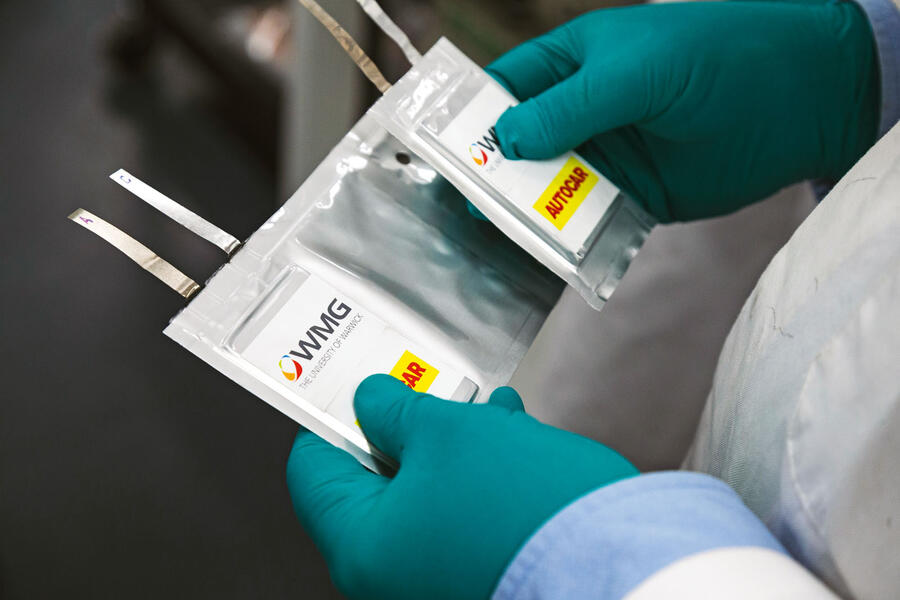We build a lithium-ion car battery
10: ADDING ELECTROLYTE
Just 2ml of liquid electrolyte containing lithium hexafluorophosphate (LiPF6) is pumped into the cell and the pouch sealed in an ultra-dry vacuum to keep moisture away from the reactive and flammable lithium. With all the other parts needed to make the cell function, only 4% of our A7 cell’s approximate 200g weight is actually lithium.
11: FORMATION AND AGEING
This is the Frankenstein moment, when the pouch becomes a functioning cell. A special rig repeatedly charges and discharges the cell while its behaviour is monitored for quality control.
Initial reactions between the electrolyte and the anode create the solid electrolyte interface (SEI) – a protective layer – and in the process give off gas, which is why the pouch was left oversized earlier on. It will be purged and trimmed later. Amazingly, the cell takes days to form: typically the small cell in a Tesla might take three to four days, but some larger pouch cells can take an astonishing 28 days. Our smaller A7 cell will probably be one to two days in the making.

How does a lithium Ion cell work?
Inside the cell are four main components – anode, cathode, separator and the lithium electrolyte – and each one has a specific job to do. In its normal, uncharged state, the lithium atoms (supplied by the liquid electrolyte) are stored on the cathode. During charging, the voltage applied to the cell pushes the lithium atoms off the cathode for collection at the anode, at which point the atoms split up by losing an electron and the atom temporarily becomes a lithium ion.
The cunning bit is the separator. This porous polymer membrane between the anode and cathode only allows lithium ions to flow to the anode. As a result, electrons have to flow in the opposite direction, out of the cell and through the charger, ending up at the anode where they reform with the ions to recreate lithium atoms. When all the lithium atoms have collected on the anode, the cell is fully charged. The separator then prevents a backflow of the lithium atoms.
This content could not have happened without the financial support of the Niche Vehicle Network, Advanced Propulsion Centre and Innovate UK. However, Autocar retained full editorial control.
READ MORE
Under the skin: Why solid-state batteries are a big positive
from Hacker News https://ift.tt/2IKVUJn